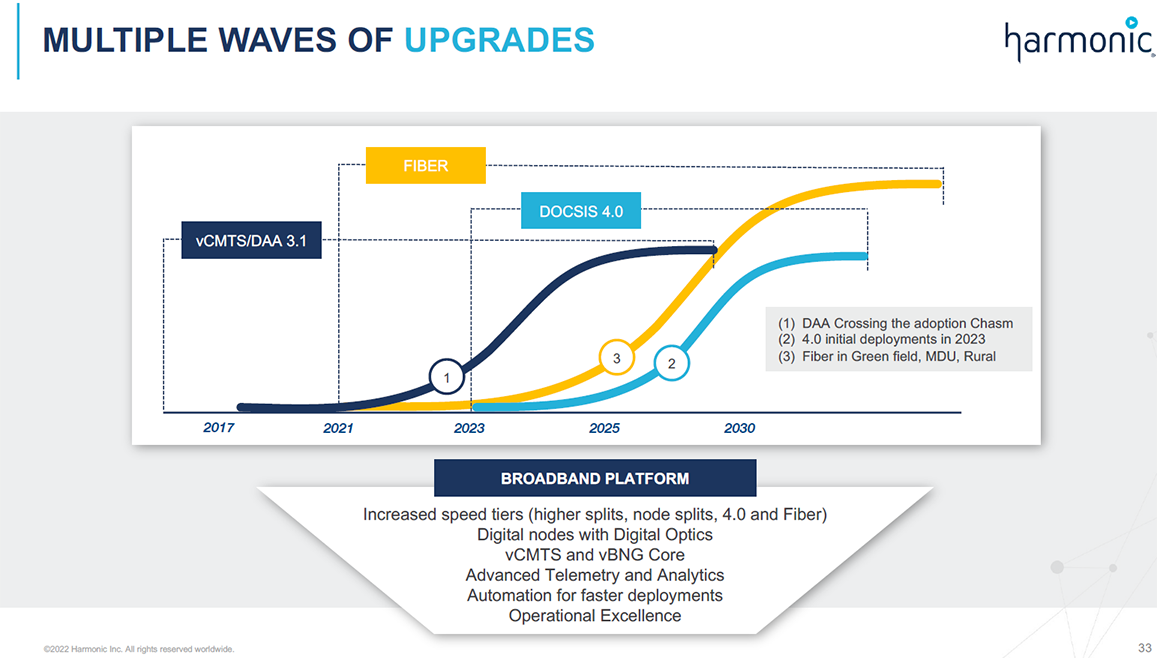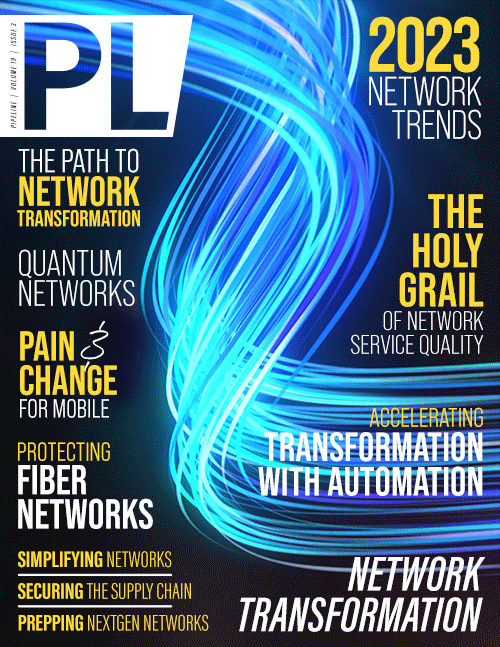Innovation, Automation and the
Path to Network Transformation
This has enabled “multi-tenancy” within their solution, which he described as a CapEx-efficient solution that supports both DOCSIS and fiber within the same network implementation. The platform includes analytics that can provide instant visibility into networks, letting customers see changes or anomalies within minutes and hours and monitor the trends impacting their customers. The software incorporates tools to automate responses to these changes.

Figure 2: Planned pace of upgrades
click to enlarge
Network convergence and network as a platform
The prevalence of bundled service offerings for cable service providers increasingly includes a mobile or wireless component and is expected to be a big driver for converged networks. In North America most cable operators resell wireless services as mobile virtual network operators (MVNOs), while globally, they’re more likely to own and operate wireless networks directly as mobile network operators (MNOs). These networks all use different access technologies—DOCSIS, PON, 4G/5G, Wi-Fi—with independent network cores and their own specialized (custom) hardware and embedded software. It’s often a complicated mix to manage efficiently and from which to develop and launch new services across an entire service footprint.
In a recent article and in a whitepaper “The Road to Wireline-Wireless Convergence,” CableLabs presented cable’s vision of fixed-mobile convergence: a single converged core consisting of a common platform and back-end infrastructure using common-off-the-shelf (COTS) servers and software.
This single converged core is agnostic to the underlying access network (DOCSIS, PON, fiber, mobile) and enables cable operators to roll out services more quickly and efficiently across all networks at the same time, from a single point of deployment and enforcement, with better management tools, simplified billing, and so on. It also promises to deliver operational, CapEx, and OpEx benefits, as well as support sustainability goals. End user customers can expect a more pervasive, consistent and seamless user experience no matter the underlying access technology.
CableLabs has mapped out this migration to a converged single core into at least three stages, with a lot of variability by operator and region, over a three- to eight-year timeline. RedHat was involved in a proof of concept shown at the SCTE Cable-Tec Expo, and CableLabs is currently working with partners on the next iteration. CableLabs and vendor ecosystem partners Casa Systems, HPE and Intel were also involved in a proof of concept for the FMC project.
While CableLabs stressed that estimated timelines for deployment by members will extend out to 2028 and beyond, the industry will need to develop specifications and vendor implementations will also need to be developed prior to any deployment. Non-standards-based vendor deployments may potentially lead the way to standards development.
CableLabs experts Mark Bridges, Vice President, and Randy Levensalor, Principal Architect, both of the Future Infrastructure Group, explained in a conversation with Pipeline the work
that they are doing on the wireline-wireless convergence project both



















